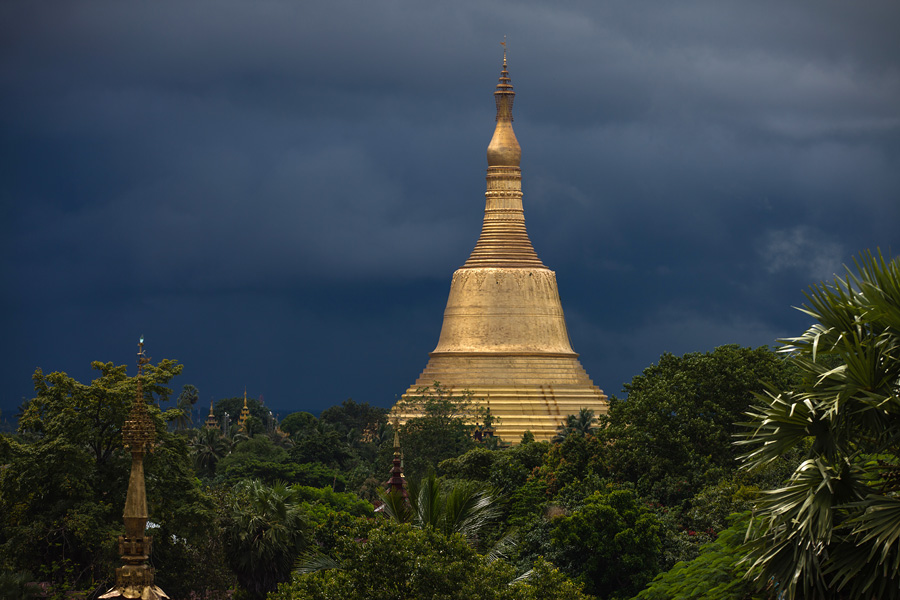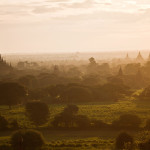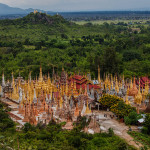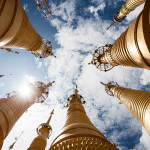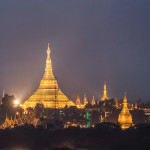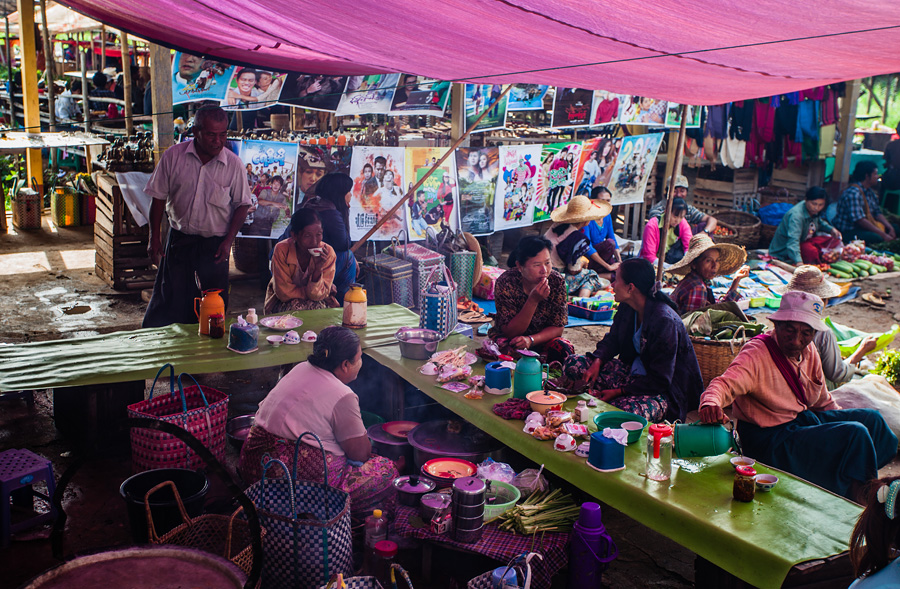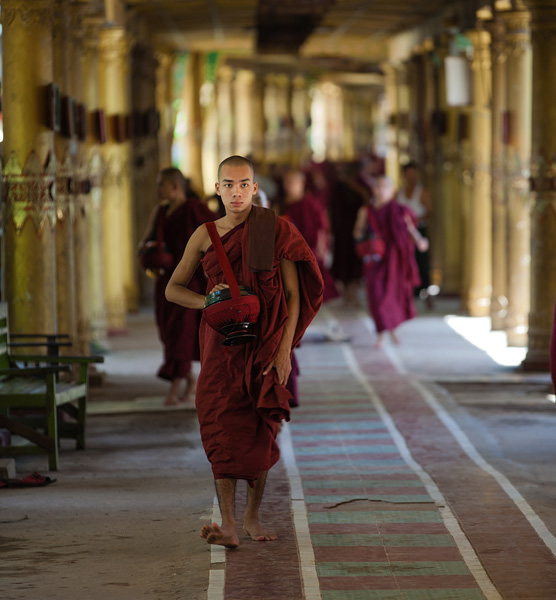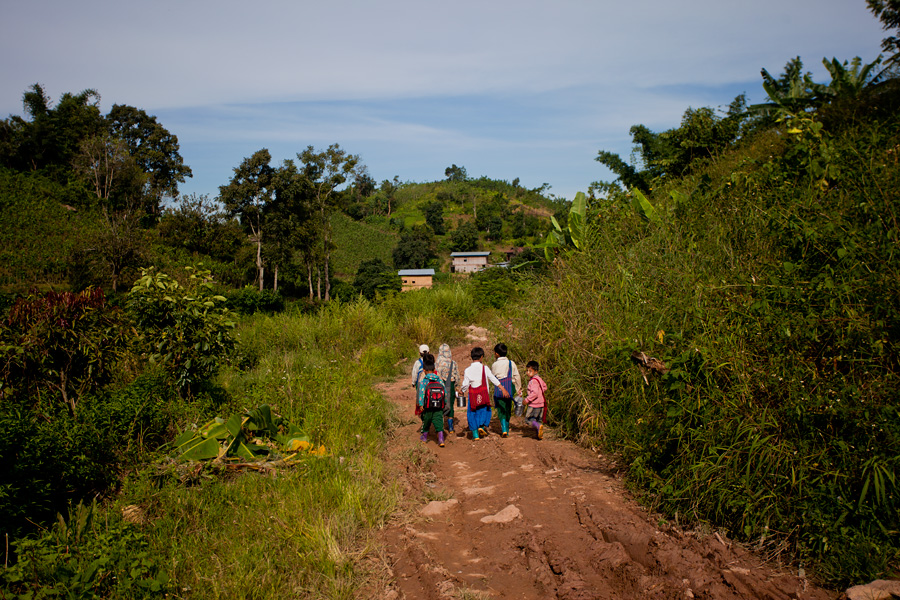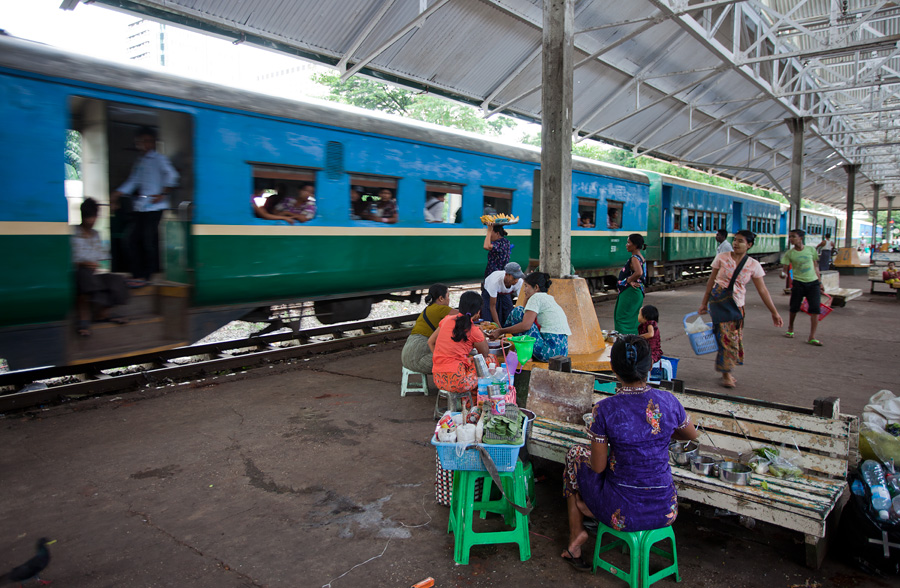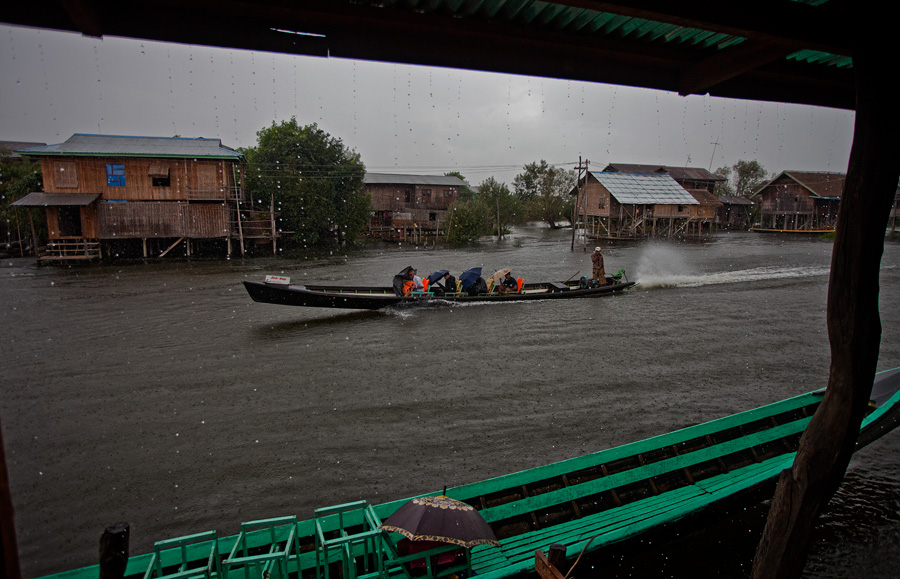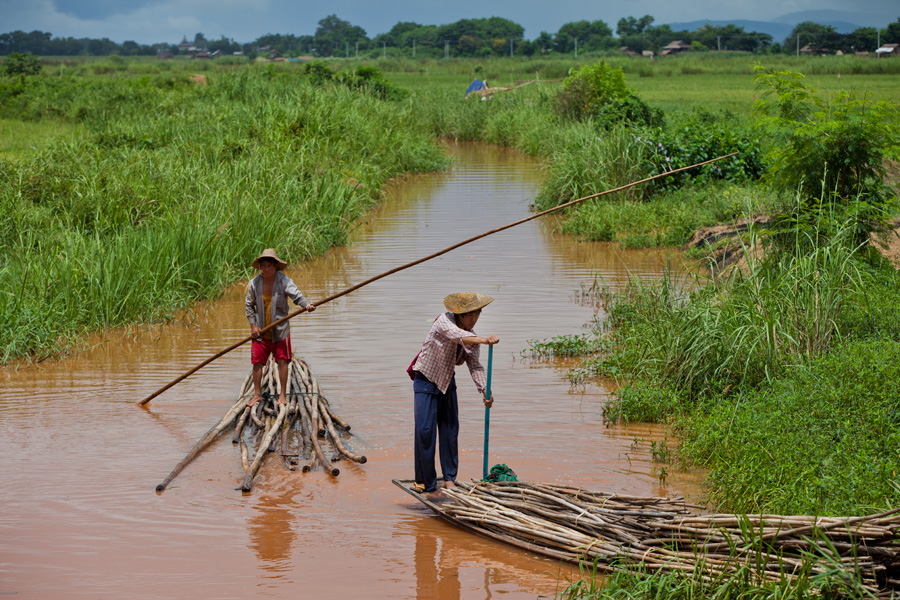Celebrating Myanmar – Travel Experiences that make you fall in love with the country
Also see: Our photography tour to Myanmar
I made a two-week visit to Myanmar in 2013 and totally loved travelling through its cities and countrysides. Before I begin the detailed travelogues, here is a quick look at things that I loved about the country.
1. Pagodas, pagodas and pagodas.
Shwedagon Pagoda is perhaps the most well-known of all the pagodas in Myanmar, if not in the entire world. The 99 meter high tower is one of the holiest sites in the country. It is coated with several tonnes of gold on its surface and studded with thousands of precious stones. After the sun goes down, it glitters in so much of light that even the clouds hovering high above reflect its lights in an otherwise dark sky. Yet, Shwedagon is just one of many many charming pagodas littering the country’s landscapes.
The day after I visited Shwedagon, I was in the small town of Bago to see an even taller and equally majestic Shwemadaw Pagoda, rising over hundred meters and surrounded by rich-green, dense tropical vegetation. A week after that, I was in Inle Lake Region, keenly exploring small but beautiful cluster of Pagodas. Some of them were old and worn out and yet retained a charm not very different from the brilliant oldness of Camboadian Temples. There were new ones too, glittering in a golden paint and dwarfing the surroundings in their shine.
But the ultimate experience of Myanmar’s Pagodas is from a place that every traveller wishes to see. Seeing the sun set on the pagoda-fields of Bagan, where brick-coloured conical edifices grow from the green expanse, is something worth dying for.
2. Tea houses
We all know our coffee shops. They are places where we meet people, spend time chatting and sometimes even working. While coffee-shops are the trends of last few decades, Myanmar has had its own versions of coffee-shops for a long time.
Welcome to the tea-house. Nearly every street corner that has a few commercial establishments will also play host to a tea-shop. These are places with limited furnishing–usually a bunch of low-rise round tables with tiny stools haphazardly placed around them. Menu is limited to tea, sometimes pre-mix coffee and a few snacks. The smaller tea-shops may have just one or two persons manning the whole place, while larger ones will have a few more staff to take your request. These places are normally used by people who want to meet and chat, and also to conduct small businesses. The setup is usually simple, and charming. The best part – they tend to be open from as early as 6am all the way till 10pm.
3. The monks and nuns
You are never too faraway from a monastery or a nunnery, no matter where you are in Myanmar. I do not know much about nuns; you can take it for granted that the monks are friendly and welcoming. In every monastery I visited, I felt welcomed and in no way intimidated. It was often a pleasure to see monks learning in the monasteries, working in their kitchen or simply whiling away their time.
The practice of monks and nuns seeking alms every morning is a timeless ritual and is an arresting visual that you can see in most parts of Myanmar.
4. The self-sufficient village collectives
In central Myanmar, in the hills surrounding Inle Lake, I found interesting village collectives that achieves tasks that individuals would find it difficult to achieve. In these hills, village chiefs and monks play a key role in the day-to-day governance and in resolving issues related to the village. Often, the collective works together to repair the roads, establish primary schools in the village and even generate electricity. These are hilly regions with many perennial streams crisscrossing the landscape–ideal for installing small hydel powers that generate sufficient power for a village or two. The collective often invests on generators and creates infrastructure needed to light up the village.
The village chiefs may also function to keep the social order in the village. In a village that I went to, the chief even keeps drinking habits in check. Anyone caught in a drunken brawl may be penalized for the act. The collective also makes an effort to ensure financial well-being of the families, often allocating or reallocating land for cultivation to families that may need it. It’s a brilliant local governance system, perhaps having some semblance to the Gram Swaraj System that Mahatma Gandhi envisaged.
5. The trains
I took the three-hour long circular train in Yangon and found it charming. It is not exactly the most comfortable and the fastest journey that a commuter would desire, but an old-worldsy system that a traveller will cherish. The railway system belongs to the British era and hasn’t changed a great deal.
The trains are often full of activity with many vendors walking in and out, selling betel leaves, fruits and other edibles. At stations with major markets, you see people boarding with loads of vegetables and other wears that they have just bought or hoping to sell. It is easy to catch a conversation with other commuters on the train, especially at stretches where it is not crowded.
6. Floating living in Inle Lake region
Inle Lake in central Myanmar is a world built on the lake surface–on the water. In here, houses are built on stilts above the lake waters and villages exist that can be approached only by boat. The only thing that differs here from a regular village is the fact that they are not rooted on the ground. But they do have everything that a normal village would have, such as electricity (supplied with tall poles high above the water), post office (floating), vegetable gardens (floating), monasteries (on islands), markets (reachable only with boats) and so on. The lake is well-known for its fishermen who use unique technique of rowing boats with their legs. What I found equally fascinating are its floating vegetable gardens, floating villages, markets and monasteries.
7. The tropical countryside
In many places, especially in the Irrawaddy Delta, and you will see plenty of greenery. Paddy fields stretch far and wide. Even suburbs are filled with a lot of vegetation. There are rivers and waterbodies abound.
In the Inle Lake region, paddy fields are so filled with water that they are often navigated on boats rather than feet. There is a tropical sense of well-being everywhere. Perhaps this is overwhelmingly so in summers, but after the monsoons and as the winter months approach, the world here is as beautiful as it can get.
